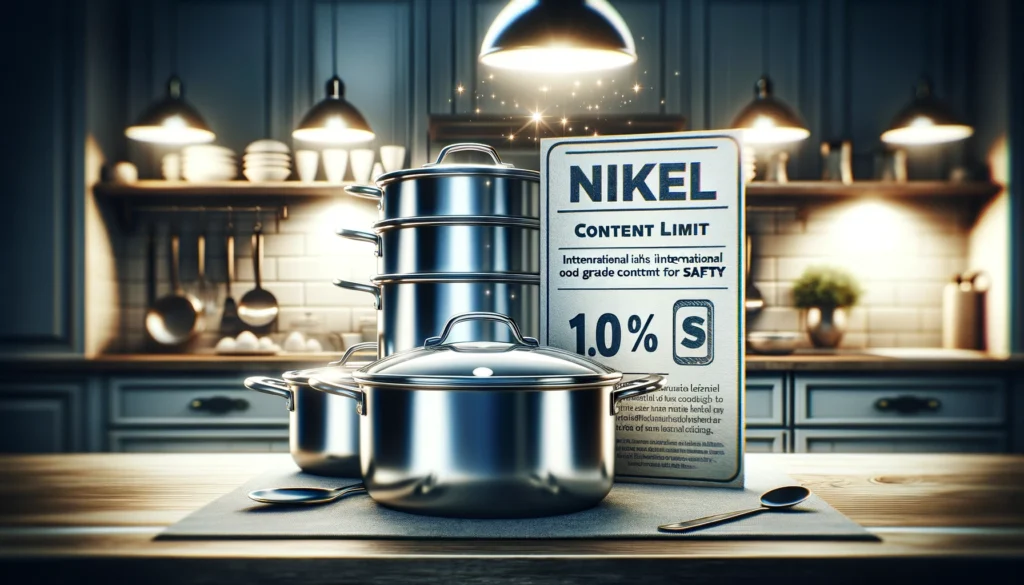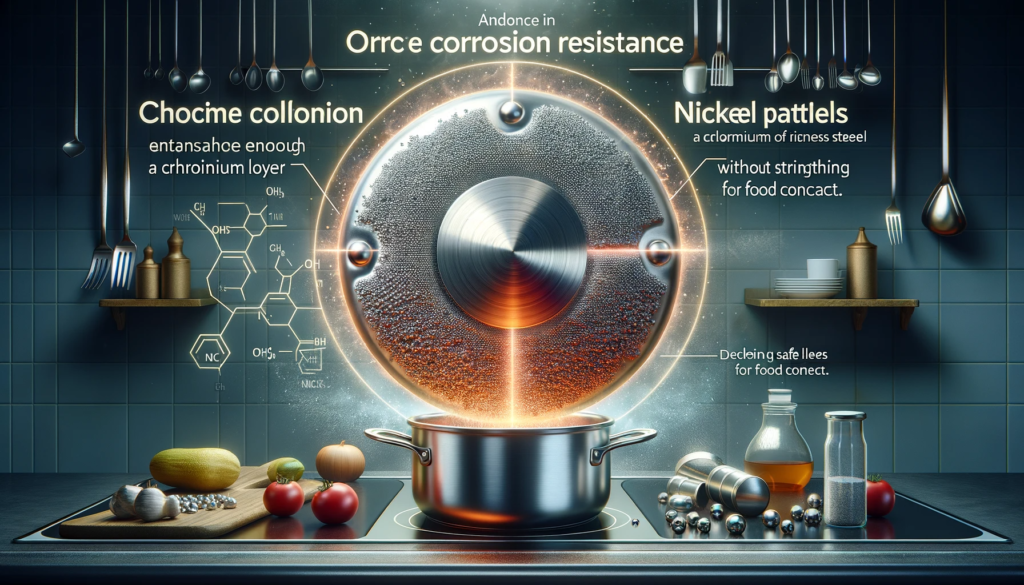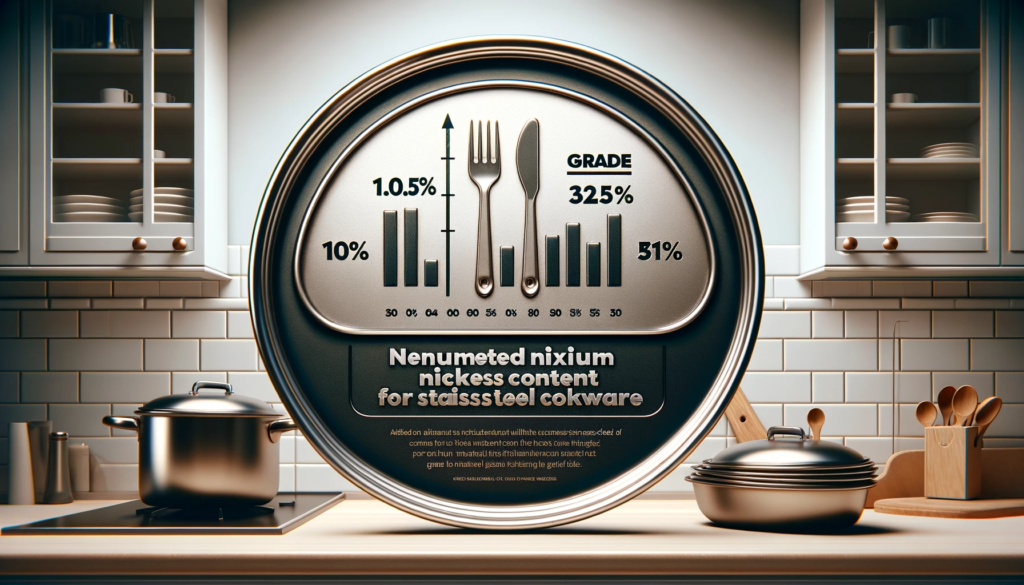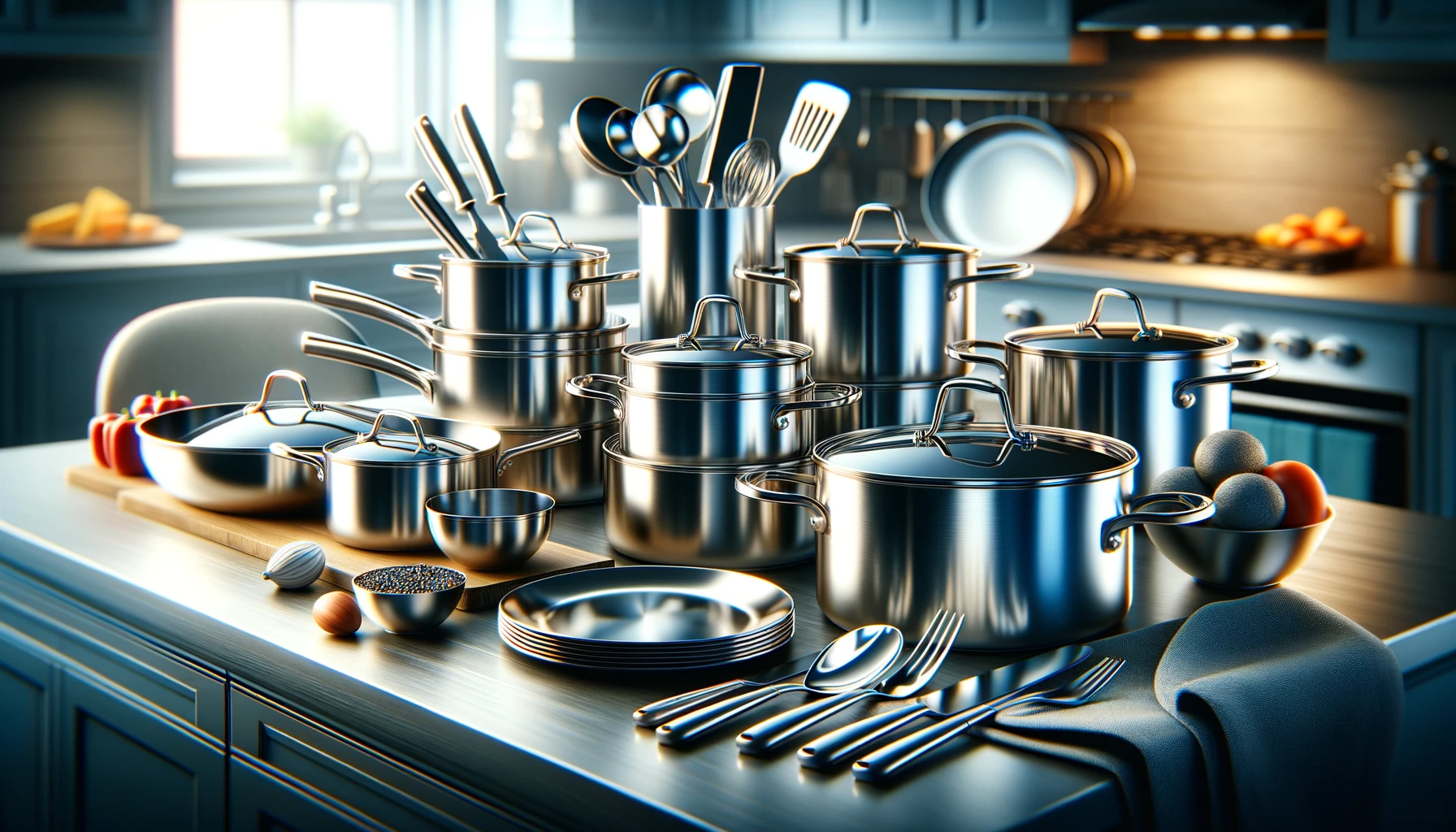Nickel may strengthen stainless steel’s shine, but how much is too much for cookware?
Stainless steel cookware contains nickel to increase corrosion resistance, but high levels can leach out and pose health risks.
International food grade standards limit nickel release to minimize exposure through contact with acidic foods.
Let’s dive into recommended nickel thresholds, safety testing procedures, and best practices for choosing cookware to keep heavy metal intake in check.
How Much Nickel Content is Permissible in Stainless Steel Cookware?

According to international food grade stainless steel standards, nickel release is limited to 0.5 micrograms per 100mL in the United States and 0.5 micrograms per cm2 weekly in the EU and UK.
To comply with these thresholds, cookware manufacturers are advised to limit nickel content to less than 10.5%.
So in short, 10.5% is widely regarded as the maximum permissible amount of nickel in stainless steel cookware before leaching becomes problematic.
Now let’s take a closer look at the specific nickel restrictions and why this metal can be dangerous in high doses.
What is Stainless Steel?

Stainless steel is a steel alloy that contains a minimum of 10.5% chromium content.
The chromium creates a protective oxide layer on the steel’s surface that prevents corrosion and staining.
Stainless steels are valued for their corrosion and stain resistance as well as their durability.
They are commonly used in applications that demand rust prevention including cookware, appliances, architecture and automotive parts.
The most common grades of stainless steel used in cookware are 304, 316 and 430.
Grade 304 stainless contains approximately 8-10.5% nickel while grade 316 has 10-14%.
Grade 430 contains no nickel.
The nickel content contributes to stainless steel’s corrosion resistance.
However, excessive nickel content can negatively impact food and potentially lead to nickel leaching during cooking.
Grades of Stainless Steel Used in Cookware

Grade 304 stainless steel is a commonly used grade thanks to its versatile corrosion resistance and durability.
It contains between 8-10.5% nickel content which provides corrosion resistance but is not so high that nickel leaching is a major concern.
Grade 316 stainless steel has 10-14% nickel but is vulnerable to nickel leaching.
Grade 430 stainless steel contains no nickel content.
While grade 430 resists corrosion, it rusts more easily than nickel-containing stainless steel grades.
Grade 304 offers a good balance of corrosion resistance and low nickel content for cookware applications.
Grade 316 is more corrosion resistant thanks to its higher nickel levels but the increased nickel also makes it more prone to leaching.
Most cookware manufacturers use grade 304 for this reason.
Nickel’s Role in Stainless Steel

Nickel is added to stainless steel to enhance its corrosion resistance properties.
Steel with at least 10.5% chromium forms a protective chromium oxide layer that resists corrosion and staining.
The addition of nickel further stabilizes this protective layer, providing extra corrosion and rust protection.
More nickel means better protection.
However, excessive nickel content has drawbacks when stainless steel is used for food contact and cooking.
Nickel can leach out of stainless steel cookware into acidic foods during the cooking process.
Highly acidic foods such as tomatoes, vinegar, fruit juices and wines are most problematic as they draw out the greatest amounts of nickel.
Too much dietary nickel intake over time carries health risks including lung inflammation and respiratory cancers.
For this reason, international standards limit the permissible nickel release from stainless steel used to handle food.
Cookware manufacturers must strike a careful balance between nickel content and corrosion resistance.
Food Grade Stainless Steel Standards

The European Union (EU), United Kingdom and United States have established standards limiting the allowable nickel release from stainless steel materials intended for food contact.
These food grade standards aim to minimize dietary nickel intake from stainless steel cookware, utensils, prep surfaces and appliances.
The current European standard EN1811 limits nickel release to 0.5 micrograms per square centimeter per week.
This means stainless steel cookware used in Europe can only release 0.5 μg of nickel for every cm2 of surface area over one week in an acidic food simulation test.
The UK adopted EN1811 upon leaving the EU.
The United States standard in the public health Food Code limits nickel release to 0.5 micrograms per 100 mL of 4% acetic acid solution after two hours at 150°F.
This equates to 0.5 μg per approximately 4 oz of acidic liquid after 120 minutes of simmering heat.
Recommended Maximum Nickel Content

To meet stringent food grade stainless steel standards, most manufacturers and industry experts recommend a 10.5% upper limit on nickel content.
Grade 304 stainless steel falls just under this threshold at 8-10.5% nickel.
Higher nickel grades like 316 (10-14% Ni) are discouraged for cookware despite their superior corrosion resistance.
Limiting nickel content to 10.5% or less reduces the risk of excessive nickel leaching while still allowing enough to sufficiently stabilize the protective chromium layer that gives stainless steel its valued performance properties.
The most commonly specified grade for kitchen utensils and cookware is thus 18/10 or 18/8 stainless, indicating composition of 18% chromium and 10% or 8% nickel, respectively.
Testing Cookware Nickel Leaching

To determine if stainless steel pots, pans and other cookware are leaching excessive amounts of nickel, manufacturers typically utilize a 4% acetic acid test.
4% acetic acid reliably simulates cooking with acidic foods like tomatoes, lemon juice or vinegar that can draw nickel out of stainless steel.
In this test, a stainless steel cooking vessel is filled with a 4% vinegar solution and heated to simmering temperature for two hours, replicating typical cooking.
The liquid is then analyzed to measure how much nickel leached from the cookware surface into the hot acidic broth over the duration of simmering.
The results of this analysis must show 0.5 μg/100 mL or less nickel release to comply with food grade stainless steel standards in the United States.
EU and UK regulations allow 0.5 μg/cm2 weekly.
Manufacturers validate their stainless steel cookware compositions and nickel contents through this or similar leaching tests before products reach the market.
Choosing Low Nickel Stainless Steel Cookware

When selecting stainless steel pots and pans, choose cookware with grade 304 stainless construction to limit nickel content to 10.5% or less.
Grade 304 meets food contact requirements, offers good corrosion resistance and controls nickel leaching potential.
Verify the manufacturer lists the grade on packaging or product descriptions.
Reputable high-end kitchenware brands adhere to food grade regulations so their products should naturally comply with nickel release standards, though it never hurts to check with the manufacturer.
Lesser known brands may cut corners on material quality so confirming nickel content is especially important.
Contact companies directly regarding test results and certifications if this information is unavailable.
Avoid selecting grade 316 stainless steel cookware when possible since its higher nickel content crosses the 10.5% threshold, unless the manufacturer provides certification of passing nickel leach testing.
Opt for an 18/10 or 18/8 grade 304 stainless steel pan for optimal safety and performance.
Adhering to these best practices minimizes any concerns over heavy metal intake from stainless cookware.
Conclusion
In conclusion, grade 304 stainless steel with less than 10.5% nickel content strikes the right balance for cookware.
It resists corrosion while controlling nickel leaching far below harmful levels.
When buying new pots and pans, check that the grade is listed as 18/10 or 18/8 stainless, confirm the brand’s adherence to food safety standards, and contact the manufacturer if more information is needed.
Following these guidelines ensures cookware durability without risks of heavy metal overexposure.



